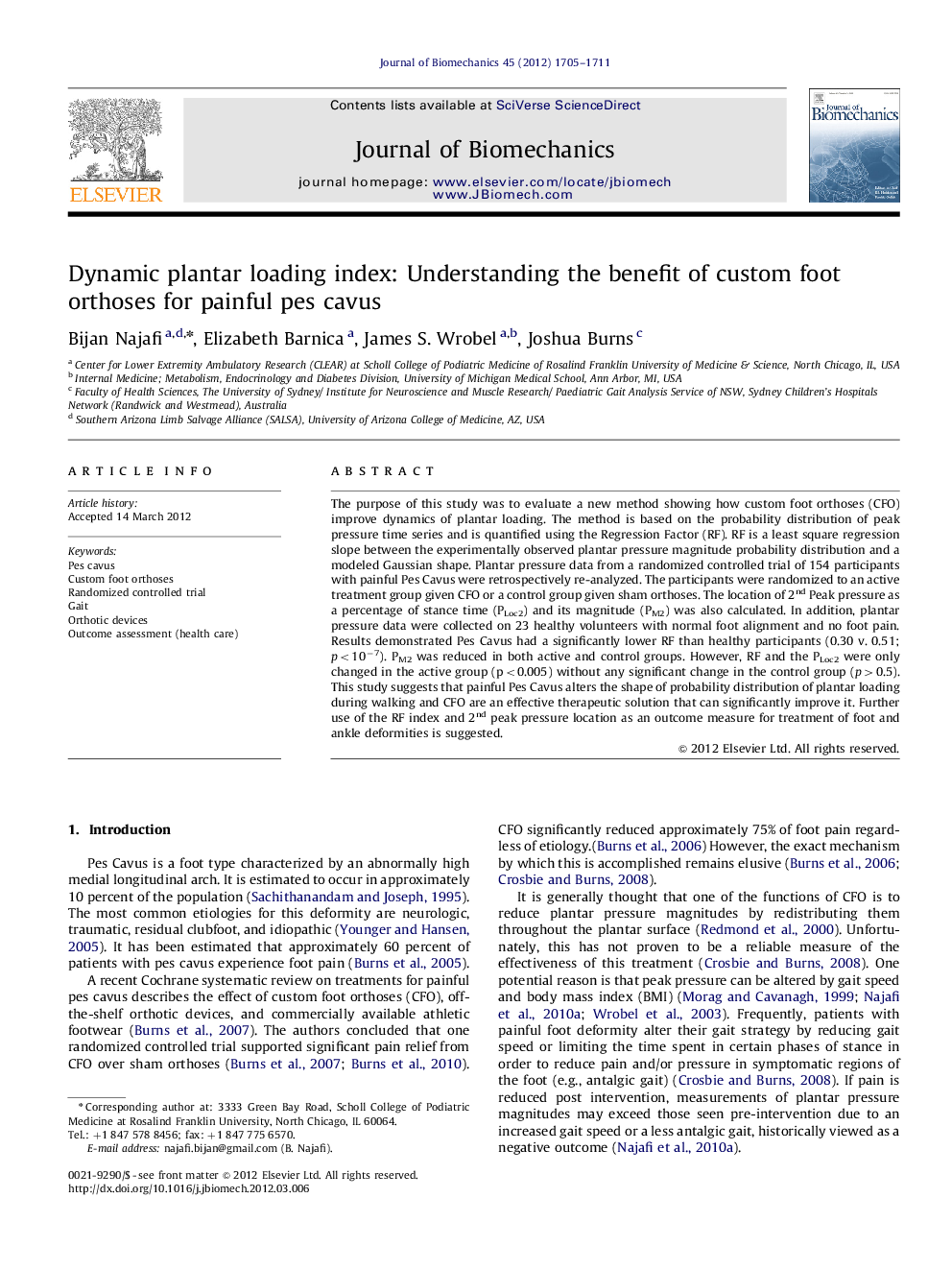| Article ID | Journal | Published Year | Pages | File Type |
|---|---|---|---|---|
| 10432331 | Journal of Biomechanics | 2012 | 7 Pages |
Abstract
The purpose of this study was to evaluate a new method showing how custom foot orthoses (CFO) improve dynamics of plantar loading. The method is based on the probability distribution of peak pressure time series and is quantified using the Regression Factor (RF). RF is a least square regression slope between the experimentally observed plantar pressure magnitude probability distribution and a modeled Gaussian shape. Plantar pressure data from a randomized controlled trial of 154 participants with painful Pes Cavus were retrospectively re-analyzed. The participants were randomized to an active treatment group given CFO or a control group given sham orthoses. The location of 2nd Peak pressure as a percentage of stance time (PLoc2) and its magnitude (PM2) was also calculated. In addition, plantar pressure data were collected on 23 healthy volunteers with normal foot alignment and no foot pain. Results demonstrated Pes Cavus had a significantly lower RF than healthy participants (0.30 v. 0.51; p<10â7). PM2 was reduced in both active and control groups. However, RF and the PLoc2 were only changed in the active group (p<0.005) without any significant change in the control group (p>0.5). This study suggests that painful Pes Cavus alters the shape of probability distribution of plantar loading during walking and CFO are an effective therapeutic solution that can significantly improve it. Further use of the RF index and 2nd peak pressure location as an outcome measure for treatment of foot and ankle deformities is suggested.
Related Topics
Physical Sciences and Engineering
Engineering
Biomedical Engineering
Authors
Bijan Najafi, Elizabeth Barnica, James S. Wrobel, Joshua Burns,
